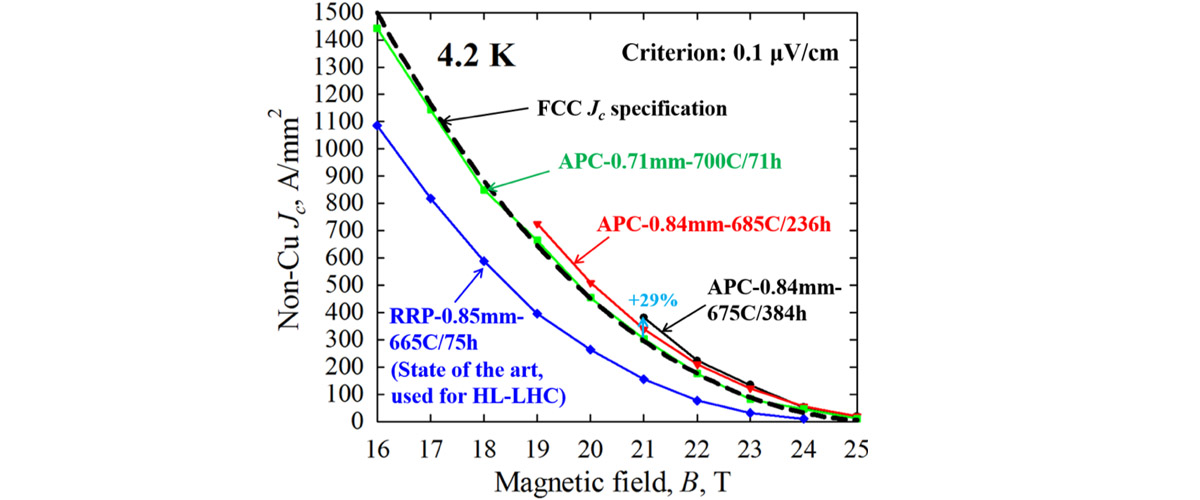What did scientists discover?
Recently-developed superconductor wires, based on widely used Nb3Sn, have discovered a new technique to make finer crystalline grains and pin magnetic flux while carrying an electrical current in high magnetic fields. These new wires have shown impressive increases in operational magnetic field ranges as well as improved current carrying properties at high magnetic fields. This improvement in current-carrying capability is significant – a 50% increase - for a practical superconductor long thought, until now, to be fully developed with little room for improvement.
Why is this important?
This is an important practical and engineering result. It meets the performance thought to be needed for the proposed Future Circular Collider; a multi-billion-dollar particle accelerator proposed to advance the highest reaches of high energy physics. This wire could also impact medical devices for high field Nuclear Magnetic Resonance (NMR) and ultra-high-field Magnetic Resonance Imaging (MRI) applications, such as brain imaging.
Who did the research?
M. D. Sumption1, X. Xu2, J. Rochester1, X. Peng3, E. W. Collings1
1The Ohio State University; 2Fermilab; 3Hyper Tech Research Inc.
Why did they need the MagLab?
The high fields available at the MagLab were critical to this research. Such measurements require magnetic fields that exceed the upper operational fields (critical fields, Bc2) of these advanced wires (Bc2 ~ 28T at 4.2 K). Our measurements also required the ability to supply large currents in applied fields from 15-25 T. Only the MagLab can provide such facilities.
Details for scientists
- View or download the expert-level Science Highlight, Teaching an Old Dog New Tricks: Fifty Percent Increase in Critical Current for Ternary Nb3Sn Wires with Artificial Pinning Centers
Funding
This research was funded by the following grants: G.S. Boebinger (NSF DMR-1157490); X. Xu (Fermilab LDRD); X. Peng, M. D. Sumption (US DOE SBIR)
For more information, contact Tim Murphy.






